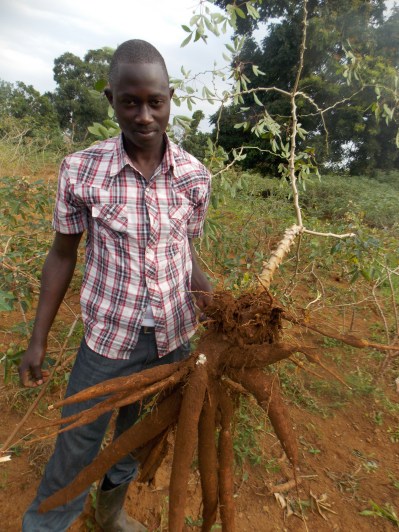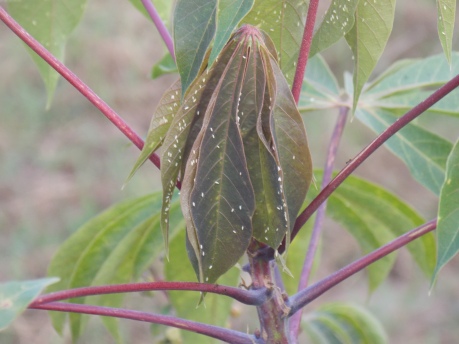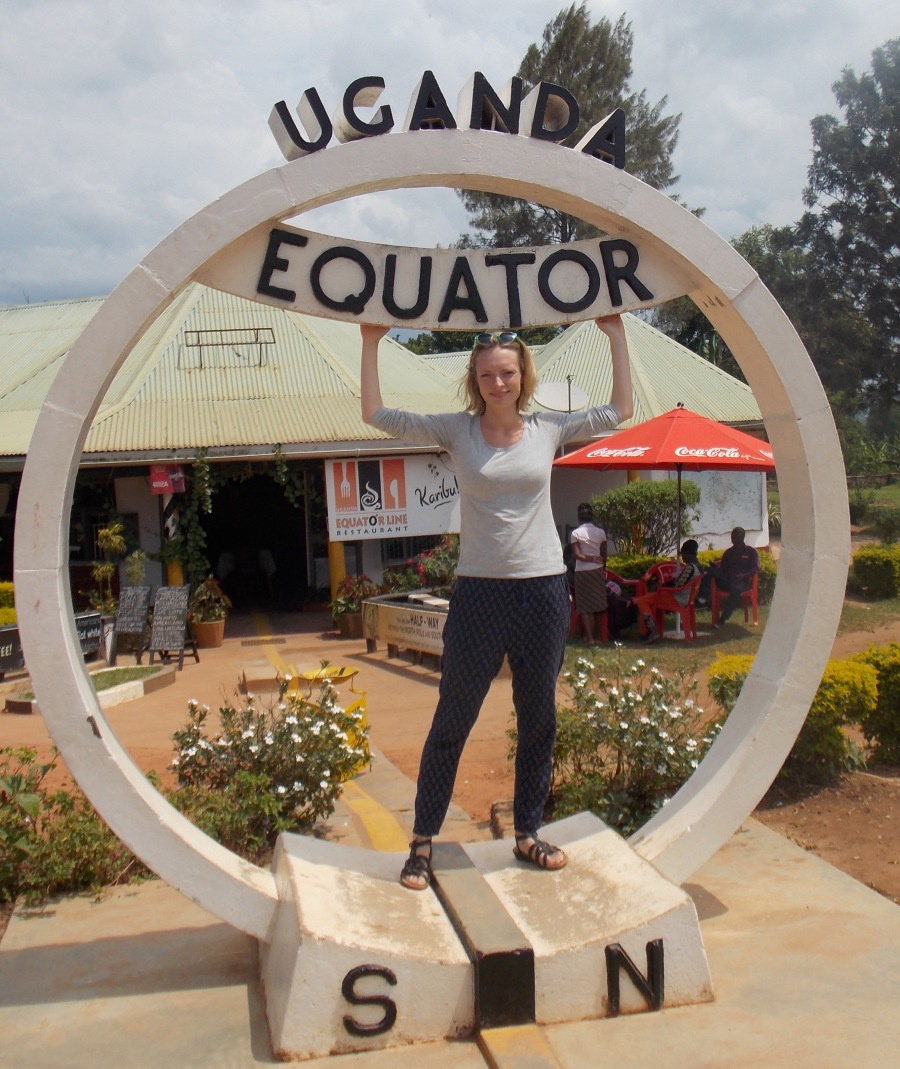At the end of last week I was lucky enough to be invited on a trip to the field. I didn’t really know what to expect but was very excited to find out!
The purpose of the trip was to collect data for the 5CP project to find out how different varieties of cassava respond to Cassava brown streak disease (CBSD) and Cassava mosaic disease (CMD) in different areas.
We set off at 5.30am in the morning; the first stop was Lake Victoria to catch a ferry to the Sesse Islands. The team consisted of me, the driver (Bosco), research assistant (Gerald Adiga) and research technician (Joseph). Along the road, we saw several accidents, sadly a far too common occurrence in Uganda…
Due to delays, the ferry was rammed, and by the time we arrived it was almost the evening. We raced to the agricultural school with the field trial. Here the team have planted blocks of 25 clean cassava varieties from five African countries and our job was to score them for disease symptoms. CBSD and CMD are not very common on the Sesse Islands, and so most of the plants were healthy.
After a night of drinking Guinness in a corner shop we headed out, again at 5.30am! This time we headed to the city of Mbarara in the western region. The drive was really beautiful, passing Lake Mburo National Park and mountains covered with matoke.
Whilst scoring the cassava plants here we noticed a super abundance of whiteflies, which carry CBSD viruses. The weather had been particularly dry, allowing the whiteflies to breed like crazy. Fortunately, CBSD is also uncommon in this area and very few plants were diseased.
The data from the 5CP project will help farmers to decide which cassava varieties offer the most protection against CBSD and CMD in their local areas; helping to protect them from the devastating yield losses caused by these diseases.
On the way back we passed the equator line, and I got the chance to take some touristy photos. This week I also saw the Ndere dance troupe, who showcase the different dance and music styles from all over Uganda and other neighbouring countries. It was a lot of fun, some dances bared a weird resemblance to morris dancing and marching brass bands!
More from this blog series:
The purpose of the trip was to collect data for the 5CP project to find out how different varieties of cassava respond to Cassava brown streak disease (CBSD) and Cassava mosaic disease (CMD) in different areas.
We set off at 5.30am in the morning; the first stop was Lake Victoria to catch a ferry to the Sesse Islands. The team consisted of me, the driver (Bosco), research assistant (Gerald Adiga) and research technician (Joseph). Along the road, we saw several accidents, sadly a far too common occurrence in Uganda…
Due to delays, the ferry was rammed, and by the time we arrived it was almost the evening. We raced to the agricultural school with the field trial. Here the team have planted blocks of 25 clean cassava varieties from five African countries and our job was to score them for disease symptoms. CBSD and CMD are not very common on the Sesse Islands, and so most of the plants were healthy.
 |
| An agricultural student digs up a healthy cassava plant. |
Whilst scoring the cassava plants here we noticed a super abundance of whiteflies, which carry CBSD viruses. The weather had been particularly dry, allowing the whiteflies to breed like crazy. Fortunately, CBSD is also uncommon in this area and very few plants were diseased.
 |
| Super abundance of whiteflies on cassava which carry CBSD viruses. |
Fun stuff
On the way back we passed the equator line, and I got the chance to take some touristy photos. This week I also saw the Ndere dance troupe, who showcase the different dance and music styles from all over Uganda and other neighbouring countries. It was a lot of fun, some dances bared a weird resemblance to morris dancing and marching brass bands!
 |
| Crossing the equator! |
-----------------------------------
This blog has been written by University of Bristol Cabot Institute member Katie Tomlinson from the School of Biological Sciences. Katie's area of research is to generate and exploit an improved understanding of cassava brown streak disease (CBSD) to ensure sustainable cassava production in Africa. This blog has been reposted with kind permission from Katie's blog Cassava Virus.
 |
| Katie Tomlinson |
Blog 2: Week one: Settling in to Ugandan life
Blog 3: Learning the ropes
Blog 4: Clean cassava to solve brown streak problem?
Blog 5: Taking a trip to the cassava field!
Blog 6: Using GM to fight cassava brown streak disease
Blog 3: Learning the ropes
Blog 4: Clean cassava to solve brown streak problem?
Blog 5: Taking a trip to the cassava field!
Blog 6: Using GM to fight cassava brown streak disease

